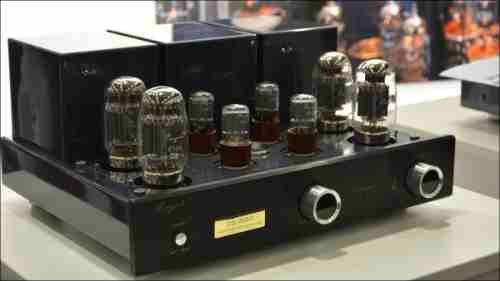The wide variety of options available can make it difficult to set up a quality home audiophile sound system. Deciding between an integrated amp (or a preamp + amp) can be challenging. So, what distinguishes an integrated amp from a preamp + power amplifier?
Preamps are signal-boosting devices that take the audio signal from a music-playing device and amplify it. An integrated amp has a built-in power amp and a preamp. An integrated amp can be more cost-effective and convenient than a separate preamp, which produces high-fidelity, better-sounding sounds.
Although integrated amps and preamps do the same job but have different features and qualities, they are both suitable for other purposes. Let’s discuss the differences to determine which one is right for you. I’ll also help you decide if an integrated amp is a good preamp.
SOUND COMPONENTS
Hi-Fi enthusiasts will need to use what is called “separates,” or components that can be separated. These “source” devices (so-called because it’s from where the signal originates) include a radio tuner and phonograph, reel-to-reel tape player, cassette player, and network sources such as streaming services in modern systems.
These components are all connected to a preamplifier (sometimes called a “control amp”) or preamp. This component allows the user to switch between source devices to playback. It also provides phono equality, tone controls, and balance. The preamp output is routed through to a power amplifier (or amp for short), which raises audio levels sufficiently to transmit it over wires and speakers. The result is a seamless listening experience.
How amplification works
Before we discuss the features that make integrated amplifiers stand out, we must first understand how amplification typically works. We must talk about the signal chains when we speak about amplification. The audio travels from your source device to the speakers or headphones.
Your phone could be the source. Whatever the start, the overall volume should increase before you hear it.
The power amplifier could be connected directly to your source device. However, this would not make the amp loud enough for speakers. The volume cannot be adjusted. You wouldn’t also be able to adjust EQ or any other parameter.
The preamp is the first part of the signal that comes from your playback device. A preamp will slightly increase the signal level in preparation for the power amp. However, it can handle volume controls and tone shaping.
Preamp/power amp vs. integrated amplifier
Many music fans prefer separate preamps and power amps. This allows for cleaner sound and less noise from the preamp circuitry. Additionally, it gives you more freedom to build and upgrade high-end systems.
There are some drawbacks. These include the higher price of buying two components and difficulty fitting two significant parts into your entertainment center. It’s worth noting, however, that most integrated amplifiers include a preamp output. This lets you send audio signals out to a separate power amplifier and the integrated for source switching.
There is no one right way to build your system. Your particular situation will determine whether or not you select a stereo receiver, home theater receiver, separate parts, integrated amplifier, or separate components. If the integrated amp still appeals to you after reading this far, let’s get into the specs and features to find the best one for your home.
System matching is vital.
Amplifiers must work in conjunction with stereo speakers. Here are some tips to help you make sure they do.
Are you scratching your head when presented with specs like “75W into 8 Ohms”? Let’s get to the point.
The speaker/amp pairing is not limited to the amp’s power output (how many Watts it can deliver each channel of a song signal) but also to the speaker’s impedance characteristics measured in ohms (measured by dB) and sensitivity.
Impedance refers to how difficult the speaker is to drive for the amplifier. A lower figure means it’s more complex. The speakers’ sensitivity measures how loud the speaker can go for a given input (1W with the speaker measured at 1m).
Buying an Integrated Amplifier
You get a preamp/power amp in one box if you see integrated amplifiers advertised. These amplifiers have a volume and EQ control. The audiophile world knows that paying more doesn’t always mean you get more features.
A standalone integrated amp uses more quality components than an integrated amplifier in A/V receivers. This is because this integrated amplifier focuses solely on sound quality and signal amplification.
An integrated amplifier is not equipped with a tuner, as an A/V receiver does. They also have fewer inputs. The idea behind an integrated amplifier is that you can add source devices to the amp and then use a switcher as needed. This is not always the case, however. A Yamaha A–S301BL integrated amplifier has multiple inputs, an onboard tone control, and even a headphone jack.
